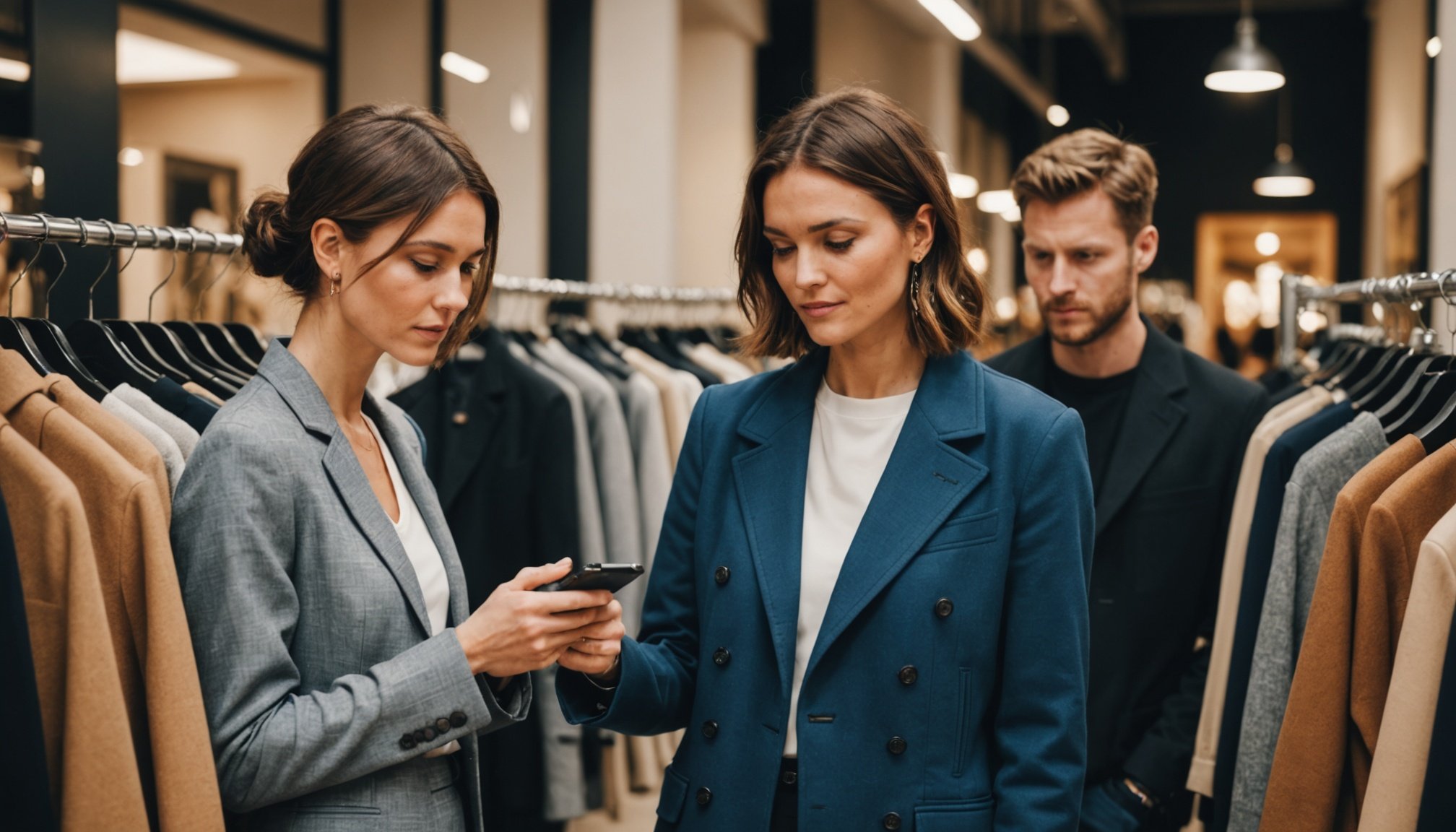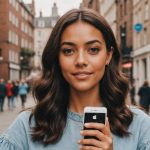Unlocking the Power of Data-Driven Marketing in the UK’s Fashion Industry: Top Strategies for Success
In the ever-evolving landscape of the UK’s fashion industry, data-driven marketing has emerged as a pivotal strategy for brands seeking to stay ahead of the curve. This approach leverages advanced data analytics, social media insights, and innovative technologies to create a more personalized and effective marketing experience. Here’s a deep dive into the top strategies that are helping fashion brands thrive in this data-rich environment.
The Role of AI in Fashion Trend Forecasting
One of the most significant advancements in data-driven marketing for fashion is the use of Artificial Intelligence (AI) in trend forecasting. Companies like Heuritech are at the forefront of this revolution, offering AI-powered insights that help brands predict and quantify consumer demand.
Topic to read : Ultimate Strategies for UK Restaurants to Boost Their Online Ordering Success
“Heuritech possesses an AI-based visual recognition technology and a forecasting model allowing apparel brands to quantify and predict what people wear, based on the largest dataset on fashion,” explains the company’s approach to market insights[1].
- Analyzing Social Media Images: Heuritech analyzes over 3 million social images daily to provide unbiased data about the market. This includes detecting 2000 fashion attributes such as macro prints, colors, fabrics, and granular shapes.
- Consumer Panels: The company uses consumer panels representing different segments, from celebrity influencers to mainstream consumers, to ensure a comprehensive understanding of market trends.
- Predictive Insights: By analyzing past trend trajectories and predictive insights, brands can integrate future best-selling trends into their collections, avoid slow-sellers, and improve demand forecasting accuracy.
Leveraging Social Media for Brand Visibility
Social media platforms are no longer just tools for engagement; they are powerful engines driving brand visibility and revenue. For fashion brands, platforms like Instagram, TikTok, and Pinterest are essential for building a strong online presence.
Also read : Mastering Influencer Marketing for UK Fashion Brands: The Definitive Success Handbook
“Social media has broad applications, especially in the fashion industry. Instagram and Pinterest are highly visual platforms that can help you target potential customers and raise brand awareness,” notes an expert in social media marketing for fashion[2].
Key Strategies for Social Media Success
-
Build Brand Awareness: A proactive approach to improving visibility on social media can secure strategic partnerships, increase traffic, grow revenue, and enhance the customer base.
-
Example: Brands like Shein and Pretty Little Things are frequently mentioned by influencers on TikTok, significantly boosting their brand awareness[2].
-
Drive Website Traffic: Social media is an effective channel for driving low-cost traffic to your website.
-
Statistic: 25.6% of industry professionals believe social media is the most effective digital marketing channel[2].
-
Use Influencer Campaigns: Collaborating with influencers can capture the attention of your target market.
-
Example: Approximately 51% of UK marketers are already working with influencers, with brands like Shein and Zara benefiting greatly from these partnerships[2].
-
Utilize User-Generated Content (UGC): Encouraging customers to post photos and videos of themselves wearing your clothing can increase engagement and purchasing confidence.
-
Statistic: 73% of shoppers say UGC boosts their purchasing confidence, and 61% state it encourages them to interact with brands[2].
The Impact of Influencer Marketing
Influencer marketing has become a cornerstone of digital marketing strategies for fashion brands. This approach not only drives sales but also fosters a community of loyal followers.
“In the contemporary digital landscape, social media influencers exert substantial influence on fashion brands. Through consistent posts, reviews, stories, and videos, influencers possess the ability to capture the attention necessary for fashion brands to drive sales,” highlights the influence of social media influencers[5].
Effective Influencer Marketing Tactics
-
Collaborate with Top-Tier Influencers: Brands like luxury fashion houses in Europe spend significantly on influencer marketing, primarily with top-tier influencers who have over two million followers.
-
Statistic: In the third quarter of 2021, major luxury fashion brands in Europe spent around $1.4 billion on influencer marketing, with top-tier influencers generating 80% of the total influencer marketing Media Impact Value (MIV®)[5].
-
Targeted Campaigns: Agencies like The Goat Agency and NewGen specialize in creating targeted influencer campaigns that result in significant brand awareness and sales.
-
Example: NewGen’s campaign for a mascara brand resulted in a 300% increase in sales and the product selling out seven times[4].
Embracing Digital Experiences and Augmented Reality
The fashion industry is increasingly adopting digital experiences and augmented reality (AR) to enhance customer engagement and sales.
“Consumers seek novel and interactive digital experiences with fashion brands, and augmented reality offers a range of possibilities for these brands to create distinctive encounters and adjust to new shopping habits,” explains the potential of AR in fashion[5].
How AR is Revolutionizing Fashion Retail
-
Virtual Try-Ons: Brands like Prada and Burberry are using AR to offer virtual try-on features, allowing customers to test products before purchasing.
-
Example: Prada’s advanced computer vision algorithm measures customers’ faces or bodies to ensure accurate product positioning, enhancing the shopping experience[5].
-
Immersive Shopping Experiences: Burberry’s collaboration with Google brings immersive in-store shopping experiences directly to customers’ digital devices.
-
Example: Users can visualize products like the Black TB bag and Arthur Check Sneaker in 3D, enhancing their shopping experience[5].
Consumer Trends and Sustainability
Consumer behavior is shifting, with a growing emphasis on sustainability, diversity, and inclusivity. Fashion brands must adapt to these trends to maintain a positive brand image.
“Consumers are more empowered to choose products that resonate with their own personal values, making brands more accountable for their business decisions,” notes the importance of aligning with consumer values[5].
Key Consumer Trends
-
Diversity and Inclusivity: Consumers are more likely to purchase from brands that feature diverse body types in their advertisements.
-
Statistic: More than a third of UK consumers indicate they are inclined to purchase from a brand when they see someone of their body type featured in an advertisement[5].
-
Sustainability: The transition towards sustainable and slow fashion is gaining momentum.
-
Example: Brands are investing in sustainable materials and production methods to meet the evolving demands of their customers[5].
Data Analytics and Real-Time Insights
Data analytics is crucial for making informed decisions in the fashion industry. Real-time insights help brands respond quickly to consumer demand and market trends.
“Heuritech’s technology analyzes more than 3 million social images a day to give you unbiased data about your market,” illustrating the power of real-time data analytics[1].
Benefits of Real-Time Data Analytics
-
Improved Demand Forecasting: Real-time data helps brands predict demand accurately, reducing overstock and missed revenue.
-
Example: Heuritech’s forecasting model allows brands to integrate future best-selling trends into their collections, improving sell-through rates[1].
-
Enhanced Customer Experience: Data analytics helps brands understand consumer behavior better, enabling them to create more personalized marketing campaigns.
-
Example: Brands can use data to optimize their product offerings and adjust their collection plans according to future market demand[1].
Case Studies: Success Stories in Data-Driven Marketing
Several fashion brands have seen significant success by implementing data-driven marketing strategies.
Shein: The Fast Fashion Pioneer
Shein is a prime example of a brand that has mastered the art of extreme fast fashion using data-driven strategies.
“Shein has mastered the art of ‘extreme fast fashion,’ launching a staggering 315,000 new products in 2022, far outpacing Zara’s 6,850,” highlights Shein’s aggressive and effective strategy[3].
- Real-Time Data Analytics: Shein uses real-time data analytics to respond almost instantly to micro-trends, capturing consumer attention and spending.
- Hyper-Targeted Digital Marketing: Shein’s strategy relies on optimized logistics and hyper-targeted digital marketing, making it a leader in the fast fashion segment[3].
Burberry: Embracing Augmented Reality
Burberry is another brand that has successfully integrated AR into its marketing strategy.
“Burberry actively embraces augmented reality (AR) and incorporates it into multiple virtual stores. They consistently experiment with AR in global marketing campaigns,” notes Burberry’s innovative approach[5].
- Immersive Shopping Experiences: Burberry’s collaboration with Google brings immersive in-store shopping experiences directly to customers’ digital devices, enhancing their shopping experience.
- Virtual Try-Ons: Burberry’s use of AR for virtual try-ons has significantly boosted customer engagement and sales[5].
Practical Insights and Actionable Advice
For fashion brands looking to leverage data-driven marketing, here are some practical insights and actionable advice:
Develop a Comprehensive Social Media Strategy
- Use Visual Platforms: Focus on platforms like Instagram and TikTok to showcase your products visually.
- Engage with Influencers: Collaborate with influencers to capture the attention of your target market.
- Utilize UGC: Encourage customers to post photos and videos of themselves wearing your clothing.
Invest in AI and Data Analytics
- Predict Trends: Use AI to predict future trends and integrate them into your collections.
- Analyze Real-Time Data: Use real-time data analytics to respond quickly to consumer demand and market trends.
- Enhance Customer Experience: Use data to create more personalized marketing campaigns and improve the customer experience.
Embrace Digital Experiences and AR
- Offer Virtual Try-Ons: Use AR to offer virtual try-on features, allowing customers to test products before purchasing.
- Create Immersive Shopping Experiences: Use AR to bring immersive in-store shopping experiences directly to customers’ digital devices.
In the UK’s fashion industry, data-driven marketing is no longer a luxury but a necessity. By leveraging AI, social media insights, influencer marketing, and augmented reality, brands can create a more personalized and effective marketing experience. As consumer trends continue to evolve, brands that adapt and innovate will be best positioned to succeed in this dynamic market.
Table: Comparative Analysis of Key Strategies
| Strategy | Description | Benefits | Examples |
|---|---|---|---|
| AI Trend Forecasting | Uses AI to predict fashion trends based on social media images. | Reduces overstock, improves sell-through rates. | Heuritech |
| Social Media Marketing | Leverages platforms like Instagram and TikTok to build brand awareness. | Drives website traffic, increases brand visibility. | Shein, Pretty Little Things |
| Influencer Marketing | Collaborates with influencers to promote products. | Increases sales, fosters a community of loyal followers. | The Goat Agency, NewGen |
| Augmented Reality | Offers virtual try-ons and immersive shopping experiences. | Enhances customer experience, boosts sales. | Burberry, Prada |
| Real-Time Data Analytics | Analyzes real-time data to respond to consumer demand and market trends. | Improves demand forecasting, enhances customer experience. | Shein |
Detailed Bullet Point List: Key Consumer Trends in 2024
-
Diversity and Inclusivity:
-
Consumers are more likely to purchase from brands that feature diverse body types in their advertisements.
-
57% of women in the UK believe fashion retailers are improving in their efforts to cater to diverse body sizes[5].
-
Sustainability:
-
The transition towards sustainable and slow fashion is gaining momentum.
-
Brands are investing in sustainable materials and production methods to meet the evolving demands of their customers[5].
-
Digital Experiences:
-
Consumers seek novel and interactive digital experiences with fashion brands.
-
71% of shoppers express a likelihood of increasing their shopping frequency when using AR-powered apps[5].
-
Influencer Culture:
-
Social media influencers exert substantial influence on fashion brands.
-
The global influencer marketing platform market is expected to grow significantly by 2027[5].
-
Geographical Shifts:
-
Asia continues to shine as the new growth epicenter for the fashion industry.
-
Markets like China and India are driving the industry’s next growth phase with rising disposable incomes and a burgeoning middle class[3].











